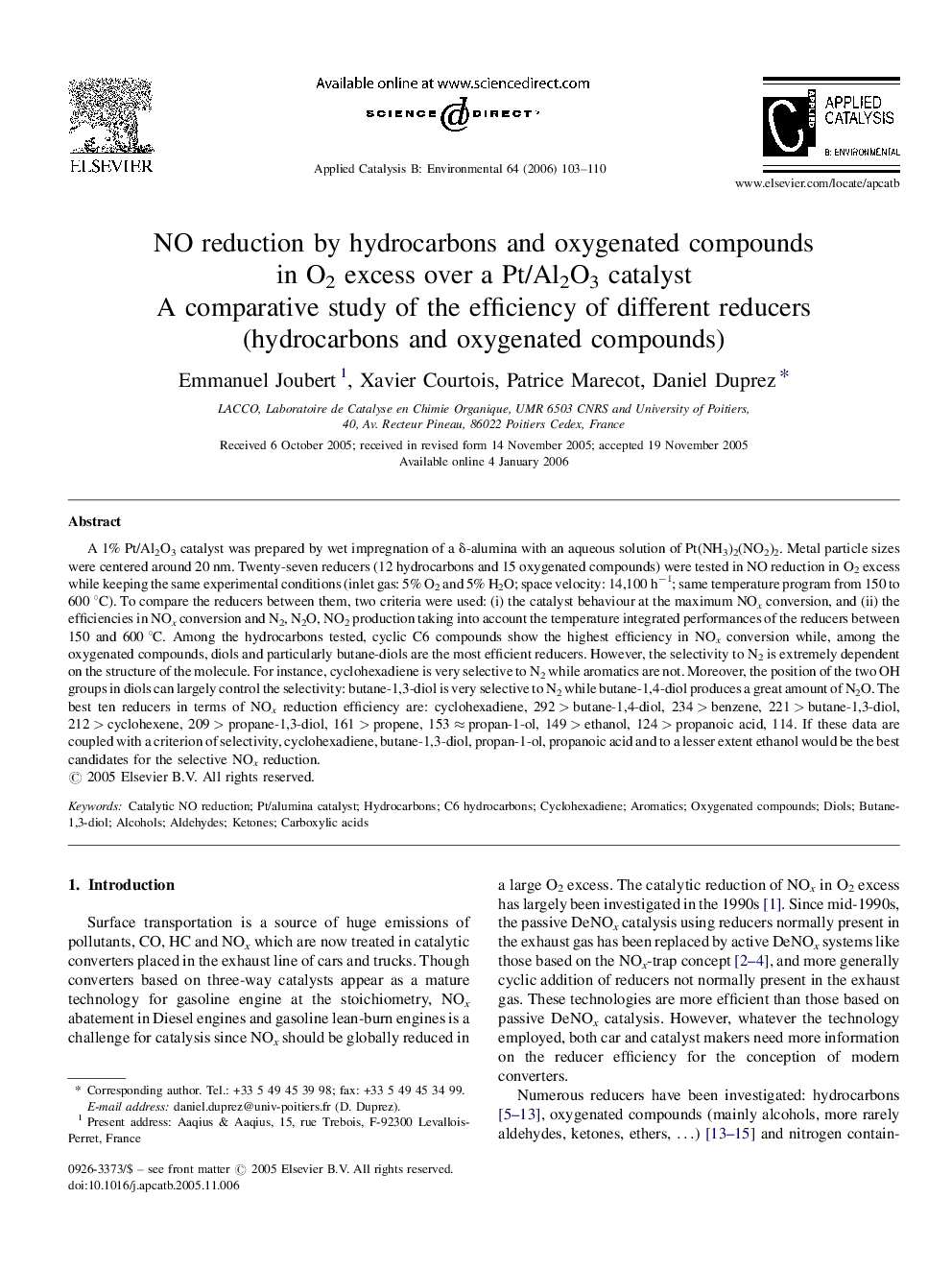| Article ID | Journal | Published Year | Pages | File Type |
|---|---|---|---|---|
| 48671 | Applied Catalysis B: Environmental | 2006 | 8 Pages |
A 1% Pt/Al2O3 catalyst was prepared by wet impregnation of a δ-alumina with an aqueous solution of Pt(NH3)2(NO2)2. Metal particle sizes were centered around 20 nm. Twenty-seven reducers (12 hydrocarbons and 15 oxygenated compounds) were tested in NO reduction in O2 excess while keeping the same experimental conditions (inlet gas: 5% O2 and 5% H2O; space velocity: 14,100 h−1; same temperature program from 150 to 600 °C). To compare the reducers between them, two criteria were used: (i) the catalyst behaviour at the maximum NOx conversion, and (ii) the efficiencies in NOx conversion and N2, N2O, NO2 production taking into account the temperature integrated performances of the reducers between 150 and 600 °C. Among the hydrocarbons tested, cyclic C6 compounds show the highest efficiency in NOx conversion while, among the oxygenated compounds, diols and particularly butane-diols are the most efficient reducers. However, the selectivity to N2 is extremely dependent on the structure of the molecule. For instance, cyclohexadiene is very selective to N2 while aromatics are not. Moreover, the position of the two OH groups in diols can largely control the selectivity: butane-1,3-diol is very selective to N2 while butane-1,4-diol produces a great amount of N2O. The best ten reducers in terms of NOx reduction efficiency are: cyclohexadiene, 292 > butane-1,4-diol, 234 > benzene, 221 > butane-1,3-diol, 212 > cyclohexene, 209 > propane-1,3-diol, 161 > propene, 153 ≈ propan-1-ol, 149 > ethanol, 124 > propanoic acid, 114. If these data are coupled with a criterion of selectivity, cyclohexadiene, butane-1,3-diol, propan-1-ol, propanoic acid and to a lesser extent ethanol would be the best candidates for the selective NOx reduction.
